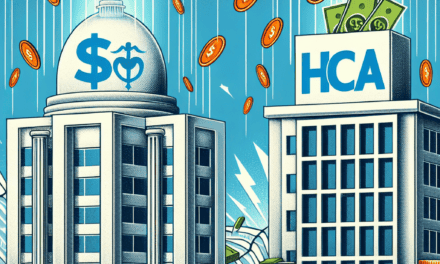Legal Challenges Arise for Trump Administration’s Healthcare Executive Orders
The Trump administration’s approach to healthcare was marked by a series of executive orders aimed at reshaping the landscape of American healthcare. These orders sought to address various issues, including prescription drug prices, healthcare access, and the Affordable Care Act (ACA). However, many of these initiatives faced significant legal challenges that raised questions about their constitutionality and the extent of executive power. This article delves into the legal challenges surrounding these healthcare executive orders, exploring their implications, the responses from various stakeholders, and the broader context of healthcare policy in the United States.
1. Overview of Trump Administration’s Healthcare Executive Orders
During his presidency, Donald Trump issued several executive orders that aimed to reform healthcare in the United States. These orders were part of a broader strategy to dismantle the ACA and introduce market-driven solutions. Key executive orders included:
- Executive Order on Lowering Drug Prices: This order aimed to reduce prescription drug prices by allowing the importation of drugs from other countries and linking U.S. prices to those in other nations.
- Executive Order on Protecting and Improving Medicare for Our Seniors: This order sought to expand telehealth services and reduce out-of-pocket costs for seniors.
- Executive Order on Access to Affordable Healthcare: This order aimed to expand access to short-term health insurance plans that do not comply with ACA regulations.
- Executive Order on Health Care Price Transparency: This order required hospitals to disclose their prices for services, aiming to promote competition and lower costs.
- Executive Order on Protecting Patients with Pre-Existing Conditions: This order aimed to ensure that individuals with pre-existing conditions would not be denied coverage.
These executive orders were met with mixed reactions from the public, healthcare providers, and legal experts. While some praised the administration’s efforts to reduce costs and increase access, others raised concerns about the legality and potential consequences of these actions.
2. Legal Foundations and Challenges to Executive Orders
The legal foundation for executive orders is rooted in the Constitution, which grants the President the authority to issue such orders to manage the operations of the federal government. However, this power is not unlimited, and executive orders can be challenged in court on various grounds, including:
- Violation of Statutory Authority: Executive orders must align with existing laws. If an order exceeds the authority granted by Congress, it can be deemed unlawful.
- Constitutional Violations: Orders that infringe upon constitutional rights, such as due process or equal protection, can be challenged in court.
- Administrative Procedure Act (APA) Violations: The APA requires federal agencies to follow specific procedures when implementing regulations. Failure to adhere to these procedures can result in legal challenges.
Several of Trump’s healthcare executive orders faced legal scrutiny on these grounds. For instance, the executive order aimed at lowering drug prices was challenged by pharmaceutical companies and state governments, arguing that it violated existing laws governing drug pricing and importation. Similarly, the order expanding access to short-term health insurance plans faced legal challenges from consumer advocacy groups, which argued that it undermined the protections established by the ACA.
3. Case Studies of Legal Challenges
To understand the legal landscape surrounding Trump’s healthcare executive orders, it is essential to examine specific case studies that highlight the challenges faced by these initiatives. One notable case involved the executive order on drug pricing.
In 2020, the Trump administration announced a plan to implement a “Most Favored Nation” rule, which would tie U.S. drug prices to those in other countries. This initiative faced immediate backlash from pharmaceutical companies, which argued that it would stifle innovation and lead to drug shortages. The Pharmaceutical Research and Manufacturers of America (PhRMA) filed a lawsuit against the administration, claiming that the rule exceeded the President’s authority and violated the Administrative Procedure Act.
The case was eventually heard in the U.S. District Court for the District of Columbia, where the judge ruled in favor of PhRMA, stating that the administration had failed to provide adequate justification for the rule and had not followed the necessary procedures for implementing such a significant change in drug pricing policy. This ruling underscored the importance of adhering to established legal frameworks when issuing executive orders.
Another significant case involved the executive order on healthcare price transparency. The order required hospitals to disclose their prices for services, aiming to empower consumers and promote competition. However, several hospital associations challenged the order, arguing that it imposed undue burdens and violated their rights under the First Amendment.
The legal battle over this executive order highlighted the complexities of implementing price transparency in healthcare. While the administration argued that transparency would lead to lower costs, opponents contended that the order could lead to confusion and increased prices for patients. Ultimately, the courts ruled in favor of the hospital associations, emphasizing the need for a balanced approach to healthcare regulation that considers the interests of all stakeholders.
4. Implications for Healthcare Policy and Future Administrations
The legal challenges faced by the Trump administration’s healthcare executive orders have significant implications for healthcare policy in the United States. These challenges not only highlight the limitations of executive power but also underscore the importance of collaboration between the executive branch and Congress in shaping healthcare policy.
One key implication is the potential for future administrations to face similar legal challenges when attempting to implement significant changes to healthcare policy through executive orders. The courts have established precedents that emphasize the need for adherence to statutory authority and procedural requirements, which may limit the scope of executive action in the healthcare arena.
Moreover, the legal battles surrounding Trump’s executive orders have drawn attention to the broader issues of healthcare access and affordability. As the nation grapples with rising healthcare costs and disparities in access, the need for comprehensive reform remains pressing. Future administrations may need to prioritize bipartisan collaboration to address these challenges effectively.
Additionally, the legal challenges have highlighted the role of advocacy groups and stakeholders in shaping healthcare policy. Consumer advocacy organizations, healthcare providers, and pharmaceutical companies have all played significant roles in challenging executive orders, emphasizing the importance of public engagement in the policymaking process.
5. The Future of Healthcare Executive Orders
As the Biden administration took office in January 2021, the future of healthcare executive orders became a topic of significant interest. The new administration signaled a shift in approach, focusing on expanding access to healthcare and strengthening the ACA rather than dismantling it. However, the legal challenges faced by the Trump administration’s executive orders serve as a cautionary tale for future executive actions.
Moving forward, it is likely that healthcare executive orders will continue to be a tool for addressing pressing issues in the healthcare system. However, the lessons learned from the legal challenges of the Trump administration’s orders will likely influence how future administrations approach healthcare policy. Key considerations may include:
- Collaboration with Congress: Future administrations may prioritize working with Congress to pass comprehensive healthcare legislation rather than relying solely on executive orders.
- Adherence to Legal Frameworks: Ensuring that executive orders align with existing laws and regulations will be crucial to avoiding legal challenges.
- Engagement with Stakeholders: Involving healthcare providers, advocacy groups, and other stakeholders in the policymaking process can help build consensus and mitigate opposition.
In conclusion, the legal challenges faced by the Trump administration’s healthcare executive orders underscore the complexities of healthcare policy in the United States. While executive orders can serve as a means of enacting change, they must be grounded in legal authority and consider the interests of all stakeholders. As the nation continues to grapple with healthcare access and affordability, the lessons learned from these legal battles will be essential in shaping the future of healthcare policy.
Conclusion
The Trump administration’s healthcare executive orders were ambitious attempts to reshape the American healthcare landscape. However, they faced significant legal challenges that highlighted the limitations of executive power and the importance of adhering to established legal frameworks. As future administrations navigate the complexities of healthcare policy, the lessons learned from these challenges will be crucial in ensuring that executive actions are effective, lawful, and responsive to the needs of all Americans.
Ultimately, the future of healthcare in the United States will depend on a collaborative approach that prioritizes access, affordability, and quality care for all individuals. By learning from past experiences and engaging with stakeholders, policymakers can work towards a more equitable and effective healthcare system.




